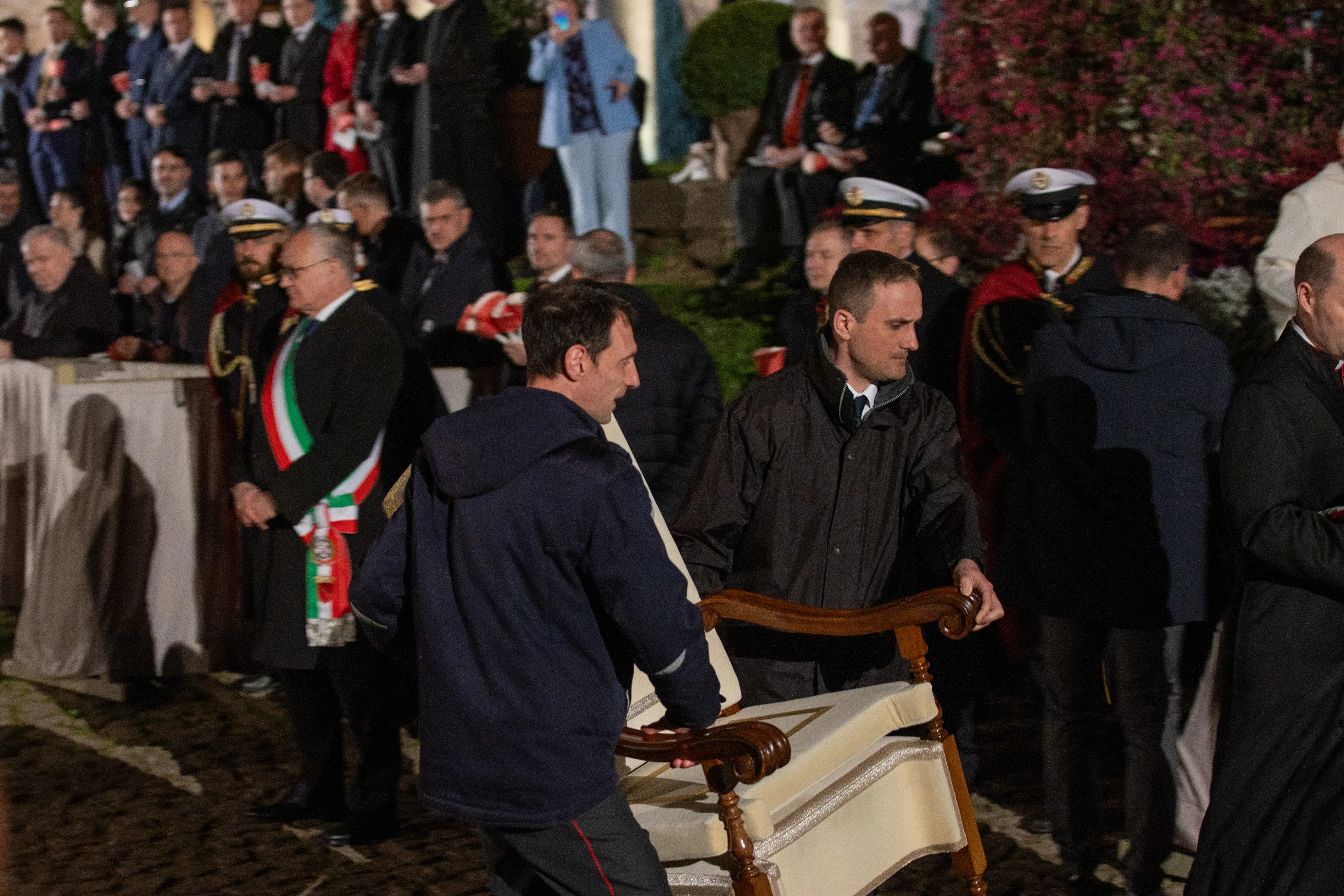Pope Francis stepped back from the Way of the Cross at Rome’s Colosseum on Friday to safeguard his health ahead of the upcoming liturgies on Saturday and Easter Sunday.
“To conserve his health in view of tomorrow’s Vigil and the Holy Mass on Easter Sunday, Pope Francis will follow the Via Crucis at the Colosseum this evening from Casa Santa Marta,” a statement from the Holy See Press stated.
The news arrived just as the event was scheduled to begin, where two men carried away the papal chair, where Rome’s mayor Roberto Gualtierei was seen standing in the background. Earlier in the day, Pope Francis presided over the Good Friday Liturgy in Saint Peter’s Basilica.

This is the second consecutive year that Pope Francis, 87, has missed the ceremony, coming as his increasingly fragile health has become a central concern.
The stations of the cross started at 9:15pm Rome time, with the rest of the program unchanged. There were an estimated 25,000 people in attendance, according to the Holy See Press Office.
In stark contrast to the dark Roman sky, the Colosseum was dramatically illuminated by a series of candles, while the adjacent ruins of the Roman Forum soared under spotlights.
This year’s meditations were written by Pope Francis, a first in his pontificate, and were based on the theme “In Prayer with Jesus on the Way of the Cross”, with each station’s mediation centred on the experience of Jesus, which the Pope linked to contemporary issues and life’s daily challenges.

“Jesus, you are life itself, and now you are sentenced to death. You are truth itself, and now you are falsely put on trial,” read the Pope’s reflection for the first station of the cross.
“Yet that silence is itself pregnant: it is prayer, meekness, forgiveness; it is a means of redeeming evil, a means of converting your passion into a sacrificial gift.”
Walking around the interior of the elliptical amphitheatre in the solemn procession, the cross was carried by different individuals, while Cardinal Angelo De Donatis, the Pope’s Vicar for the Diocese of Rome, and several other prelates, followed closely behind.

At the second station the meditation, addressed to Christ, stated: “You want us to lay upon your shoulders all our problems and needs, because you want us to find freedom and love in you. Thank you, Jesus. I unite my cross to yours, I bring you my weariness and my cares, I cast upon you every burden of my heart.
“In your vulnerability, you have shown us the triumph of your love. You have taught us that to love means to reach out to those who may be ashamed to ask for our help. In this way, weakness becomes an opportunity for growth,” the Pope’s meditation said, as the cross was carried by a disabled woman.
In one particularly evocative moment, at the ninth station, the cross was carried by a group of migrants, while the Pope’s meditation linked their struggles and social alienation those of Jesus.
“You too were imprisoned; you too were a stranger, led outside the city to be crucified. You too were naked, stripped of your clothes. You too were sick and wounded; on the cross, you too were thirsty and hungered for love. Teach me to see you in those who suffer, for you are there, and in those stripped of their dignity, demeaned by the arrogance, injustice, and power of those who exploit the poor amid general indifference.”
The ceremony concluded outside of the Colosseum, when Cardinal De Donatis delivered the final blessing and Invocations to the Holy Name of Jesus. The 15-stanza prayer ended simply, yet powerfully: “Jesus, let me say one last word to you, and to say it over and over again: Thank you! Thank you, my Lord and my God.”



 Loading ...
Loading ...